Kokum – Garcinia indica Uses, Dose, Research, Side Effects
Kokum – Garcinia indica is an antioxidant rich fruit used in the name of Vrikshamla in Ayurveda. Kokum butter juice, prepared from its fruits, is a famous coolant summer juice widely used in South India.
Botanical name – Garcinia indica Linn
Family- Guttiferae (Nagakesara kula)
Its fruits are green when unripe. Only ripe dark red colored fruit is useful for medicinal purposes.
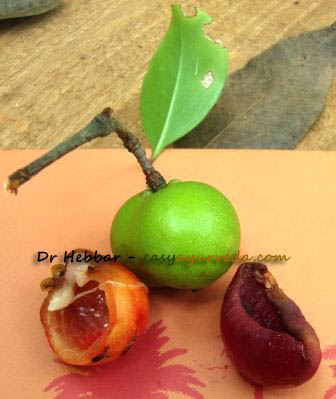
Table of Contents
Vernacular names
Names in different languages:
Hindi name- Kokum, Kokam, Komal , Amlaveta, Vishambila
English name – Kokum butter tree, Wild mangosteem, Kokum Butter tree, Red mango, Mate mongosteen, Kokam batten tree, Mangosteen oil tree, Brindonia tallow tree
Bengali : Mahada
Bombay : Kokam, Amsul, Katambi, Bhirand
Kannada name – Dhupadamara, Murgala, Tittidika, Murgmahali, Murgala, Huli, Punarpuli.
Deccan name – kokam, Ratambi
Goa name – Brindao, Amsel. Ratainbasal, Brindoesiro
Gujarati name – Kokam, Ratamba ,Kokambel ,Birandel
Kashmiri name – Titidika
Konkani : Birondd, Ratambi, Birondi
Malayalam name – Punampuli
Marathi name – Amosole, Bhirand, Chirand, Katambi, Ratamba, Kokam
Portuguese name – Brindall
Tamil name – Murgal, Puli
Telugu name – Chinta
Tulu name – Punarpuli.
Video explanation
Sanskrit synonyms
Amlashaka, Amlavrikshaka, Chukramla, Amlapoora, Chudamla, Beejamla, Phalamla,Shreshtamla – sour tasting fruit
Raktapooraka – The dried fruit is red in color and makes the water red when mixed
Tittidi phala, Tintideeka, Tittideeka – Salivation occurs immediately after seeing this fruit
Mahiruha, Chukra
Systemic classification
Division – Angiospermae
Subdivision – Dicotylydonae
Class – Polypetalae
Subclass – Thalamiflorae
Order – Guttiferales
Family – Guttiferae
Classical categorization
Charaka- Phala varga (Charaka Sutrasthana 27 ) Hrdya (Charaka Sutrasthana 4)
Raja Nighantu – Pippalyadi Varga, Panchamla Phala,
Kaiyadeva Nighantu – Aushadhi Varga
Dhanvantari Nighantu – Shatapushpadi Varga
Bhava Prakasha – Chaturamla, Panchamla, Amradi Phalavarga
Parushakadi varga – Sushrutha Samhitha
Pippalyadi varga – Raja Nighantu.
Habitat and distribution
It is reported to flourish well on the lower slopes of Nilgirihills, Singapore, China, Malabar, Malayasia, Maharastra, Kerala. Tropical rain forests of Western ghats from Konkan southwards in Mysore, Coorg, wayanad , North Kanara, Goa. It is often planted in the districts of Bombay state distributed in tropical Asia, Africa and Polynesia.
Found in western Ghats of India, Andaman and Nicobar Islands
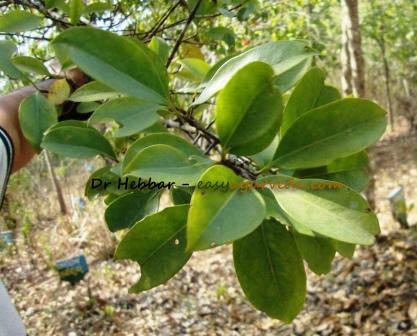
Morphology
Small tree
Leaves – Simple, opposite, oblong lanceolate
red when young, entire margin, glabrous
Flowers – Axillary or Terminal, Solitary or i spreading fascicles, Female flowers are sessile
Fruits – Globose not furrowed Purple coloured
Seeds – 5 – 8 in number and compressed
Chemical composition
Garcinia indica chemical composition:
Leaves- L-Leucine
Heartwood- Cuxanthone, Volkensiflovone, Morelloflavone, Comboginol
Fruit – Garcinol, Isogarcinol, Comboginol.
Seed – Neutral lipids, glycolipids
(Reference: Illustrated Dravyaguna VIjnana, Vol. II, by Dr JLN Shastry)
Polyphenols have antibacterial activity.
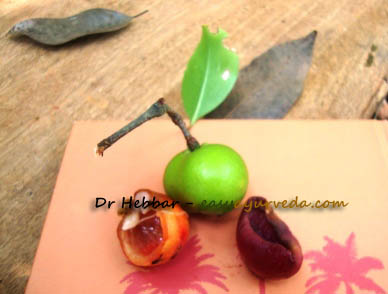
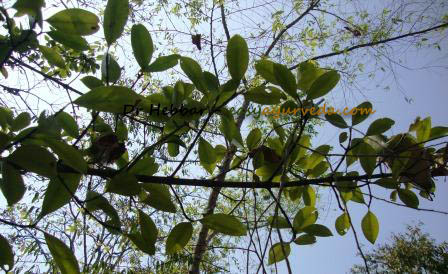
Medicinal properties
Kokum butter medicinal properties
Rasa (taste) – Amla (sour), Madhura – sweet
Guna (qualities) – Rooksha(dryness), Guru (heavy to digest)
Vipaka (taste conversion after digestion) – Amla (sour)
Veerya (potency) – Ushna (hot).
Because of its sourness, it is considered hot in potency. But when it is made into a juice with sugar candy powder and other coolant ingredients such as jaggery, it is useful as a coolant juice.
Pharmacological actions – CNS depressant, Anti hyper lipidemic, Seman coagulant
unripe fruit – Vatahara, Kapha Pitta Kara
Ripe fruit – Kapha vatahara
It is unctuous, penetrating in nature, and stimulates the digestive fire. Cures severe colicky pain, flatulence, constipation, It can even destroy the firmly established diseases and treat disorders caused due to vitiation of vata and kapha doshas.
Effect on Tridosha
Ripe fruit balances Vata and Kapha Dosha.
unripe fruit pacifies Vata dosha but increases Kapha and Pitta dosha.
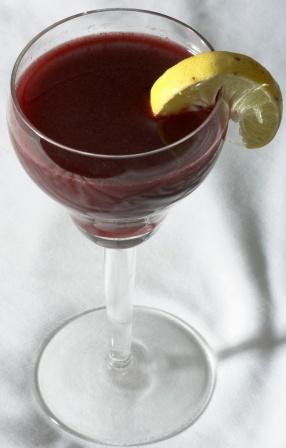
Part used, dosage
Part used- Fruit, root bark, seed oil, tender leaves
Dosage –
Root bark decoction 40-80ml,
Fruit syrup 10-20ml,
Seed oil 3-5 drops.
Vrikshamla Swarasa – Juice extract – 5-10 ml.
Sanskrit verse
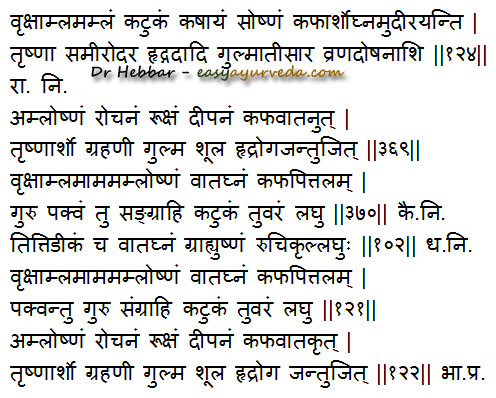
Uses
Garcinia indica uses:
Ruchikrut, Rochana – improves taste, relieves anorexia
Deepana – improves digestion strength
Sangrahi – absorbent, useful in diarrhea, IBS
Grahi – absorbent, useful in diarrhea, IBS
It is indicated in –
Kapha Arsha – Hemorrhoid’s of Kapha origin
Trushna – excessive thirst
Vataja Udara – Bloating, Flatulence
Hrudgada – Cardiac disorders – It is a very good cardiac tonic
Gulma – Tumors of the abdomen
Atisara – diarrhea, dysentery
Vrana Dosha – Ulcers, infected wounds
Grahani – IBS, sprue, altering diarrhea and constipation
Shoola – abdominal colic pain
Jantu – worm infestation
It is used in the preparation of fermented fruit wine products called Raaga.
Ayurvedic medicines
Ayurvedic medicines with Garcinia indica as ingredient:
Hingvadi Churna – used in Ayurvedic treatment of indigestion, bloating and abdominal pain.
Yavanyadi Choornam – used in Ayurvedic treatment of respiratory diseases.
Research
Anti oxidant and hepato protective activity – Aqueous extract of fruit protects liver from Anti TB medication induced liver damage.
Anti oxidant activity
Anti bacterial activity against S. typhi
How to use kokum?
Its fruits are dried, soaked in water to prepare its juice – administered in a dose of 100 ml, 2 – 3 times a day.
Its fruit powder is also dried and consumed.
Its root bark is made into decoction and administered.
It is also available in Capsule form. Regular dose is – 1 capsule 2 times a day after food.
Its tender leaves are used in preparing Chutney (paste used along with dishes), which is administered for the treatment of gastritis and headache arising due to gastritis (bilious headache). Dose – 3 – 5 grams once or twice a day, before food.
Its tender leaves are crushed and administered along with buttermilk for headache and gastritis.
Kokum for throat infection and pain –
Kokum juice – 50 ml is mixed with quarter a teaspoon of ginger and a teaspoon of honey is added to it. This combination is consumed two times a day preferably before food to treat throat infection and voice hoarseness.
Side effects
Its sour fruits are not healthy for people with Kapha and Pitta imbalance.
There are no other side effects.
Kokum juice is generally considered as safe during pregnancy, lactation and for children.
Interaction with medicines, supplements
Can this be used while taking Homeopathic medicine?
Yes. This product does not react with homeopathic medicine.
Can this medicine be continued while taking supplements like multivitamin tablets, Omega 3 fatty acids etc?
Yes. Generally, this product goes well with most dietary supplements. However, if you are taking more than one product per day, please consult your doctor for an opinion.
With western
medicines
Seek your
doctor’s advice if you are taking this product along with other western
(allopathic / modern) medicines. Some Ayurvedic herbs can interact with modern
medicine.
If both Ayurvedic and allopathic medicines are advised together, then it is
best to take Allopathic medicine first, wait for 30 minutes and then take the
Ayurvedic medicine.
Literary review
Literary review of the plant Vriksamla
Since the earliest times fruits have been the common and important items of a mans diet. In earlier times when man lived in forests he had to fill his belly with fruits and tubers. The Indus valley civilization shows that those people at Harappa & Mohenjudharo used some fruits. When we come to vedic period we see a considerable increase in the number & variety of fruit.
The Vedas are regarded as the oldest books on the Earth. In yajurveda we find the use of fruits but vrikshamla is not mentioned there.
In Maurya Sanga Period one finds authentic data about fruits in Koutilyas Arthashastra he mentioned Vrikshamla in Phalamla varga.
In samhita kala Caraka mentioned Vruksamla hradya varga later sushrutha included vrikshamla Parushakadi varga. Vagbhata also mentioned vrikshamla in several contexts . After the samhita kala in Nighantu kala BhavaPrakasha Nighantu mentioned Vrikshamla under Aamradi phala varga and Vrikshamla is also mentioned under Panchamla and chaturamla by Haritakyadi varga.
Later in the 19th century kokum butter was mentioned under rochana varga by P.V.Sharma in DravyaGuna Vijnana.
Controversies
In Astanga Hridaya kosha this vrikshamla word used for Garcinia indica. The commentary on Dhanvantari Nighantu BhavaPrakasha Nighantu as well as treatise like dravya guna vijnan same reference is seen.In Kerala Garcinia Cambogia used for vrikshamla. Since both have same property it is used depending on its availability.It is mentioned in Indian Medicinal plant by orient longum.The tuber of amlika is beneficial in grahani, arsha, madatyaya is laghu not very ushna , kapha vatagna so acc to its above property instead vrikshamla amlika used. This is found only in Charaka. Chakrapani interprets it as a small plant found in Assam. It seems to be the plant mentioned as mahardraka by Bengali commentators in reference to vrikshamla. Tinthidika is found in all the 3 great samhithas of Ayurveda. It is mentioned in amlaskanda of (cha vi 8/140) also along with other sour fruits (cha su 26/84) hence there is no doubt about its being one of the amlaphala. In charaka samhitha in phalavarga vrikshamla is described not thinthidika . in Sushrutha samhitha thinthidika is mentioned. On this basis it may be presumed that thinthidika vrikshamla are one Dalhan supported this But Amarakosha given both these as synonyms. Chakrapani interpreted vrikshamla as brahadamla or mahardraka Dalhana interpreted thinthidika of phalavarga as vrikshamla Chakrapani has not described vrikshamla in his Dravyaguna samgraha. Shivadas sen while commenting on thinthidika has interpreted it as mahardraka which comes to vrikshamla.
At last thinthidika – Rhus parviflora belongs to the family anacardiaceae. Vrikshamla – Garcinia indica belongs to the family Guttiferae so there is no doubt in their different identity.
Systemic Action
External – Oil has wound healing properties. Indicated sinus infection, Cracked foot etc. .
Internal administration
Digestive system – Act as carminative and absorbent and digestant. Liver stimulant, Facilitate movement of vata dosha in proper direction. Indicated in Loss of appetite, Hemorrhoids, Spasmodic pain, Phantom tumor etc.
Circulatory System – Its fruit is good for Heart
Skin – Root bark is indicated in skin disorders
Tapakrama – Indicated in fever and burning sensation. Squash made with its mature fruit is beneficial to prevent burning sensation associated with fever.
Satmikarana – Oil promotes wound healing and is also good for fracture healing.











37 comments
DAYANANDA S
Is Garcenia Indica is different from Garcenia Combugia that we find in Himalaya drugs product Vrikshamla?
Murugan
Thanks . very Interesting and knowledgeable.
medha ravindra athavale
sir,
this article is very good, my grandmother was used to give us kokam soaked water for external use for pitta gandhi. how to use kokam as cardiac tonic
medha athavale
Dr J V Hebbar MD(Ayu)Author
Kokam juice itself is an excellent recipe as cardiac tonic.
Bharat Mallapur
Is it beneficial for kidney function improvement? Can this be given to heart patients with early Chronic Kidney Disease?
Dr J V Hebbar MD(Ayu)Author
It is useful to improve kidney functions.
It can be given to heart patients.
Nibaran Medhi
Is kokum juice helpful in reducing body weight?
Dr Malini Bhat
No madam, Kokum is used to treat sores, prevent infection, improve digestion, alleviate diarrhea and constipation and heal stomach ulcers. Kokum’s major active ingredient is garcinol, a substance that has antibacterial, antioxidant and anti-inflammatory properties. It seems able to kill the H. pylori bacteria that cause ulcers, promote brain health.
Joe
Hello. You say “Its fruits are dried, soaked in water to prepare its juice – administered in a dose of 100 ml, 2 – 3 times a day.” What weight of Kokam (Kokum rind) should be soaked in what volume of water in order to use the 100 mls of the extract 2-3 times daily? Thank you.
Dr J V Hebbar MD(Ayu)Author
Approximately 20 grams of kokum can be soaked in 100 of water.
Dr J V Hebbar MD(Ayu)Author
It is not directly indicated for weight loss.
Tharanath
Great info by Dr Hebbar
Dr J V Hebbar MD(Ayu)Author
Thank you!
Nini
Great article, Doctor. I bpught dried kokum fruits from the grocer. I soaked in water. But the water is not pink. So do you think that it is not real Kokum?
Dr J V Hebbar MD(Ayu)Author
Usually it yields red colour. I guess they have de-pigmented it. I am not sure. It may be of bad quality.
Nini
How is kokum used In cooking?
Dr J V Hebbar MD(Ayu)Author
Its rasam is prepared, like you would prepare tomato rasam.
Nini
Thanks. Does it cause too much ushna like nose bleeds, palate and throat burning sensation, headaches, feverish, etc.
Dr J V Hebbar MD(Ayu)Author
No not at all. It is not as ushna as black pepper or ginger. It is mild
Nini
In a span of 7 days, for 5 days, I used kokum instead of tamarind to make rasam and Sambhar. I have soaked 400 g of dried kokum in water and kept it in the fridge. So every day i use about 5 or 6 soaked pods and grind it with water and use it to make rasam or Sambhar. But suddenly, my right eye turned red, throat burning, nose bleeds, my tongue is aging sores, etc, etc. Ie. Ushna is aggravated. It has been 5 days of unabated problems due to Ushna aggravation. Even munching khus khus is not helpful. Why?
Ganesh Belavigi
How long can kokum juice be preserved ? Best way to preserve it ?
Dr J V Hebbar MD(Ayu)Author
Best way to preserve kokum juice is to add equal amount of sugar to it. stir well.
This way, it can be preserved for 2 – 3 months time.
This makes it concentrated. Whenever required, add equal amount of water to it, mix well and drink.
GeethaSundar
Thank you , Dr Hebbar for the valuable advice
b.hari prasad
Please inform me whether kokam juice/water is beneficial for hyper acidity. if so, let me know the procedure to intake of it. and also let me know the store where i can get organic kokam.
Sindhu
Hello Dr Hebbar, Is it useful for skin infection? I heard from one of my family member that it is very good for skin infection? If so, then how to use it?
Manjunath
hi sir,
this juice in help to throte pain?
Manjunath
it is useful for throat pain? throat nerve pain.
Madhu
Can pregnant women drink kokum juice daily?
Sheetal Purohit
Hello Doctor,I read ur article and it is so informative.Doctor the other day I was listening to rujuta dwiekar (the famous dietician) she said apply kokum butter on the feet while sleeping u won’t snore anymore.Is this true and what is the science behind this wonderful application.
Dr J V Hebbar MD(Ayu)Author
I have not found such a reference. It could be based on the dietician’s experience. Please try and let us know.
Vikas Agarwal
Kokum is considered as a cooling drink in summers. So it’s potency should be hot or cold? I think the potency (virya) is cold. In your article it is written “Hot”. Please advise!
Dr J V Hebbar MD(Ayu)Author
Because of its sourness, it is considered hot in potency. But when it is made into a juice with sugar candy powder and other coolant ingredients such as jaggery, it is useful as a coolant juice.
veena
very useful article doctor. can i use fermented kokum? does it have any side effects? thank you
Dr J V Hebbar MD(Ayu)Author
You can use it.
SB
Hello vaidya. Thank you for your great work.
Question- can Kokum be used alongside/along with yogurt (curd) or buttermilk?
Thanks again ??.
Dr J V Hebbar MD(Ayu)Author
Yes.
Rahul Rane
sir, we are from Sindhudurg, Maharashtra and into Kokam fruit food processing on large scale. If any institutional client (pharma compnay) required its seeds, rind or juice we can supply